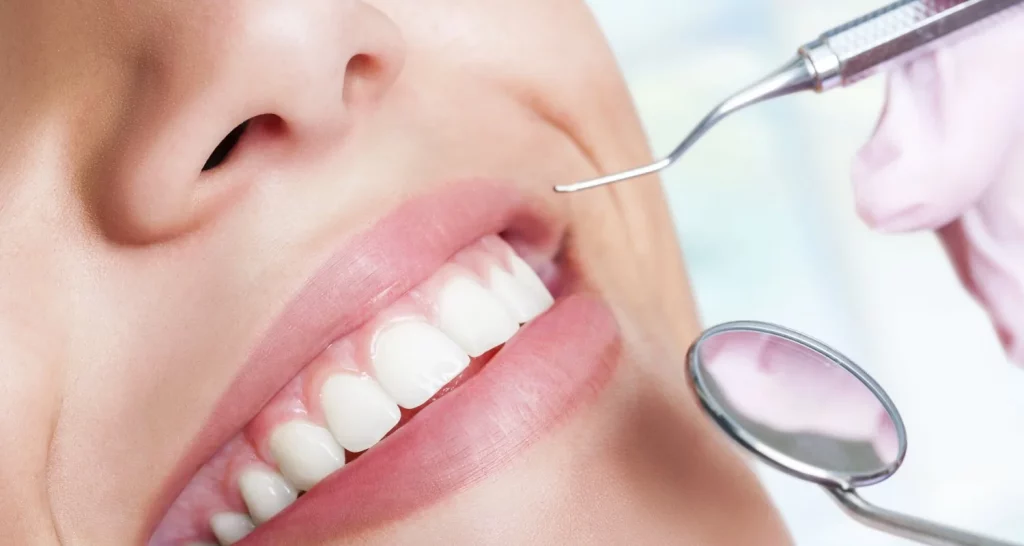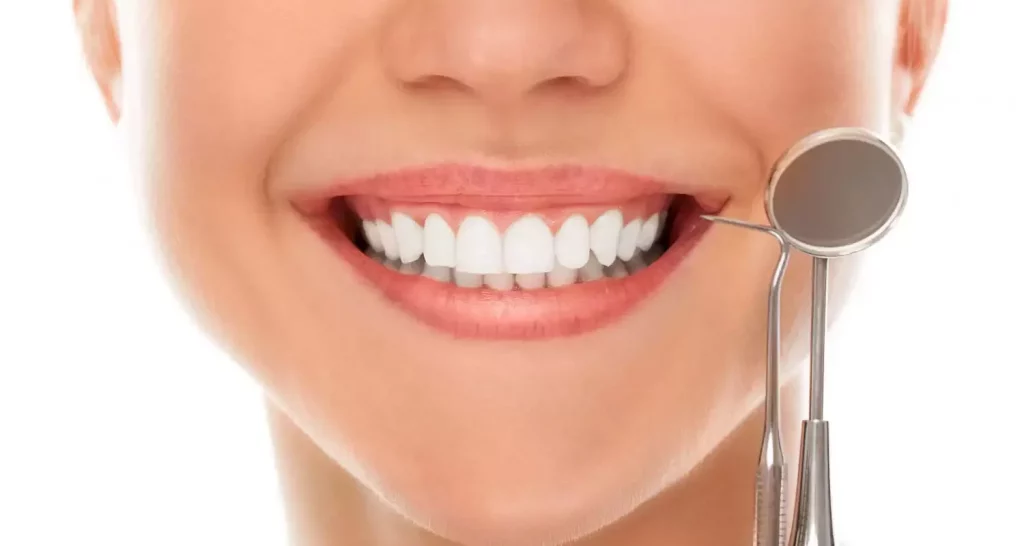Last Updated on: 19th December 2025, 07:06 am
Spring Cleaning Your Teeth! A Guide to Dental Health
Spring heralds a time of renewal and rejuvenation, presenting an ideal moment to revitalize your dental health. As nature comes alive with vibrant blooms and sunlit days, it’s an opportune time to ensure that your smile sparkles as brightly. Yet, the concept of spring cleaning extends beyond the confines of home tidiness—it’s a prime opportunity to enhance both your oral and overall health. Incorporating simple, yet effective steps into your dental care routine this season can significantly reduce the risk of future cavities. Here are five strategies to weave dental care into your springtime overhaul. With enticing deals on routine check-ups and cleanings currently available, there’s never been a better time to make your oral health a priority.
Why Is Spring the Perfect Time for Dental Check-Ups?
Spring symbolizes new beginnings and fresh starts; so what better way to embrace this season than by ensuring your dental health is in top condition? Regular dental visits are crucial for maintaining optimal oral health, and preventing issues before they escalate into more significant problems. The warmer, brighter days of spring provide the perfect backdrop to take stock of your health, including that of your teeth and gums.
The Top 5 Dental Cleaning Steps for Spring
1. Book your routine dental check-up
Spring into action by taking advantage of special discounts available for dental check-ups. These routine visits are essential for catching potential issues early and keeping your oral health on track. Dental hygienists are the authorities on oral cleanliness, employing advanced methods to remove plaque and tartar, leaving your teeth radiantly healthy.
2. Professional cleaning
Professional cleaning is akin to the deep clean you give your home during spring; it’s thorough, refreshing, and leaves everything sparkling. Discover the benefits of having a dental professional clean your teeth, removing plaque and tartar build-up that regular brushing can’t tackle.
What happens during a professional teeth cleaning?
There are several important steps to professional teeth cleaning.
- Cleaning – Your dental hygienist will clean the teeth by removing all the hard and soft bacterial buildup from the teeth and gums. He or she will use various dental tools to remove the hard buildup (called tartar or calculus) and soft buildup (called plaque). Your hygienist is extensively trained in removing only bacteria and protecting your natural tooth surface.
- Polishing – After removing all of the bacteria deposits, your hygienist will use a gritty paste to polish the surface of the teeth. The goal is to leave any exposed tooth surface as smooth and shiny as possible. This polishing process creates a surface that is more resistant to build up by bacteria and stains.
- Education – Your hygienist will give you instructions and tips on how to clean your teeth at home. This is the perfect time to have all your dental questions answered. What type of toothbrush should you use? What mouthwash is best for your specific needs? Are there any trouble spots in your mouth that you may need additional dental tools to clean? What are your specific risk factors, and what can you do to reduce them?
3. At-home oral hygiene rituals
Just as you might declutter and clean your house, your oral hygiene routine needs a spring refresh. Reassess your daily practices, ensuring they’re effective in keeping your teeth and gums healthy.
- Enhance your brushing skills: While you might believe your tooth-brushing routine is spot-on, it’s worth questioning whether your technique is as effective as it could be. Merely brushing twice daily isn’t enough if the method is off. Opt for a toothbrush with a compact head to navigate each tooth’s surface thoroughly. Aim for a brushing duration of at least two minutes without applying excessive pressure, which could damage the enamel. Employ gentle, circular strokes and hold the brush at a 45-degree angle to adequately clean along the gum line.
- Update your toothbrush regularly: If it’s been a while since you last replaced your toothbrush, now is the time to do so. For optimal dental health, introduce a new toothbrush or brush head every three months.
- Don’t skip flossing: Flossing is a critical, yet often neglected, component of oral hygiene. It accesses and cleans spots your toothbrush can’t reach, significantly lowering the risk of decay and gum disease.
- Chew sugar-free gum: Post-meal, chewing sugar-free gum can aid in keeping your mouth fresh by stimulating saliva production, which cleanses the mouth and diminishes acid levels. Limit chewing to under three minutes, and ensure the gum is sugar-free.
- Verify product expiration dates: Were you aware that dental care items also have expiration dates? As time progresses, the efficacy of the active ingredients in items such as toothpaste and mouthwash diminishes. This decrease in effectiveness is indicated by the expiration date . Utilizing expired dental products isn’t inherently harmful; but due to the reduced potency of the active ingredients, these products won’t be as beneficial. In essence, they fail to clean your teeth as intended, lacking in providing adequate defense against tooth decay.
Therefore, it’s wise to sift through your bathroom cabinet and inspect the expiration dates as part of your spring cleaning endeavor. Discarding any item that has surpassed its expiry date ensures that your family utilizes dental hygiene products capable of actively contributing to their oral health. Moreover, consider setting aside a designated bin for products nearing their expiration date in the upcoming months. This simple, proactive measure can help minimize waste in the future.
4. Update your dental care tools
Is your toothbrush looking a little worn? Spring is the perfect time to replace old dental care tools with new ones. Consider upgrading to an electric toothbrush or investing in higher-quality floss to enhance your oral hygiene routine.
- Switch to a fresh toothbrush: The effectiveness of your toothbrush diminishes as its bristles become worn and frayed, compromising its ability to thoroughly clean your teeth and creating additional niches for bacteria to flourish. This is the reason the American Dental Association (ADA) suggests changing your toothbrush every three to four months, or sooner if the bristles start to show signs of wear. Adhering to this advice ensures your toothbrush remains an effective tool against plaque, significantly enhancing your family’s dental hygiene and reducing the risk of tooth decay.
For families with children, selecting a new toothbrush can be an exciting opportunity to reignite enthusiasm for dental care. Imagine the joy of brushing with a new toothbrush adorned with their favorite characters, like unicorns or characters from Paw Patrol. This excitement can eliminate the need for reminders about brushing. Additionally, if you’ve been contemplating the switch to an electric toothbrush, now would be the perfect time to give it a try.
- Sanitize your toothbrush holder: Just as your toothbrush, the holder it sits in is susceptible to bathroom germs, necessitating regular cleanings. Ideally, you should clean your toothbrush holder with each toothbrush replacement to ensure a clean environment for your new toothbrush. Fortunately, sanitizing your toothbrush holder can be a hassle-free process. Simply placing it in the dishwasher will effectively eliminate germs, ensuring your toothbrush storage is as clean as your dental care routine.
5. Embrace cosmetic dentistry for a radiant spring smile
As the warmer seasons approach, the idea of sporting a luminous smile becomes increasingly appealing. Cosmetic dentistry offers a plethora of options, such as teeth whitening that serve as the perfect finale to your spring renewal rituals. Delving into the available treatments can not only elevate the aesthetics of your smile but also significantly enhance your self-esteem and oral health.
- Popular whitening treatments: Cosmetic dentistry is well-known for its teeth whitening procedures that brighten your smile.
- Veneers: These are used to correct chips, cracks, or gaps between the teeth, offering a seamless and flawless smile.
- Invisalign and other clear aligners: These devices provide a subtle way to straighten teeth, achieving perfect alignment without the obvious appearance of traditional braces.
- Dental implants: A durable and natural-looking option for replacing missing teeth, which also supports the overall structure of your dental framework.
Investigating these cosmetic options allows you to tailor your dental care to fit your unique desires and needs. Each treatment not only contributes to a more attractive smile but it also plays a role in maintaining dental hygiene and preventing future dental issues. This spring, consider taking your dental health and aesthetics to the next level with cosmetic dentistry, ensuring your smile is as vibrant and full of life as the season itself.
Conclusion
As the spring season encourages us to renew and refresh every aspect of our lives, let’s not forget the importance of including dental health in our spring cleaning routines. With special offers available, now is the time to ensure your smile is as bright and healthy as the season. Embrace the opportunity to give your oral health the attention it deserves and enjoy the confidence that comes with a radiant smile.
Contact Us
If you have any questions about irrigating wisdom tooth sockets or other dental topics, you can contact us at Channel Islands Family Dental as well as our page on Facebook. We look forward to your visit and we will make a timely diagnosis. Our dentists in Oxnard, Santa Paula, Ventura, Newbury Park, and Port Hueneme will be able to guide you toward the best treatment to take care of your health and give you back your best smile.



















